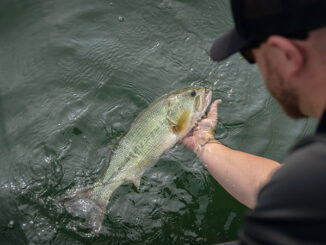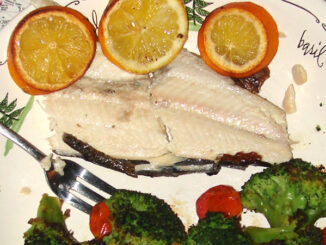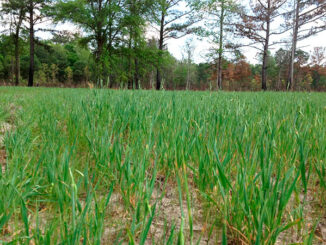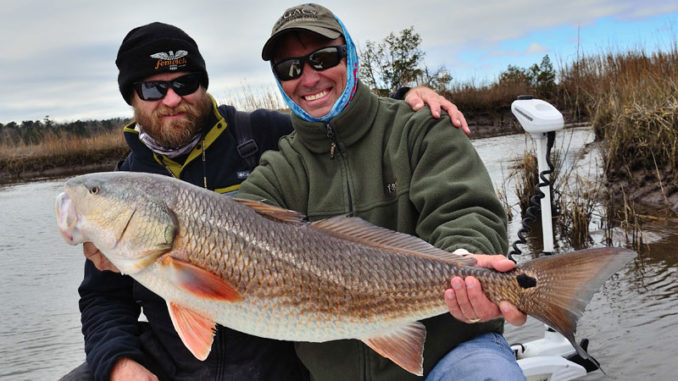
Warming water pushes redfish into a feeding mode after a long winter. Here’s where and how to find bronze battlers ready for a springtime tussle.
Even though spring officially arrived last month, April is when spring fishing patterns visit coastal estuaries. Water temperature is the true barometer for spring fishing, and when they rise above 60 degrees, the waters up and down the coast of both Carolinas come alive.
Crabs emerge from the mud, and waterways get bombarded by the first platoons of peanut-sized pogies, aka menhaden — just what the doctor ordered for feisty redfish, who leave their winter stance and welcome new arrivals one mouthful at a time.ven though spring officially arrived last month, April is when spring fishing patterns visit coastal estuaries. Water temperature is the true barometer for spring fishing, and when they rise above 60 degrees, the waters up and down the coast of both Carolinas come alive.
Anglers can get ready for April almost everywhere along the coast. From North Carolina’s shallow Pamlico Sound, which experiences no lunar tide effects, to the 9-foot tide swing in Beaufort, S.C., habitats vary, and fishing options can seem just as puzzling. But the tactics that Jason Dail of Silver Spoon Charters uses in his backyard at Topsail Beach, N.C., won’t be much different from those being used in Venice, La.
For Dail, who fishes redfish tournaments from his home state to Louisiana, fishing new water doesn’t frighten him, because he has learned redfish behave similarly during spring no matter where they’re swimming.
“Reds break up from their winter schools and leave their winter hideouts when it warms up,” said Dail (910-540-0319). “During the winter, reds are either around the inlets, along the beach or congregated in the back of creeks in large schools.”
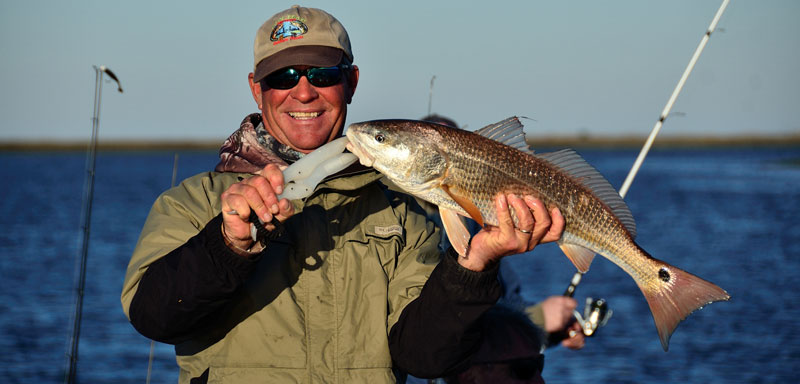
Water temperature is the driving factor for changes in patterns and fish movements no matter their location. Not only does warming water rev up a redfish’s engines, it fires up the movement of bait, and Dail thinks bait is a key factor in all redfish movement.
“The reds leave their large schools and are on the move in the spring, looking for food,” he said. “The peanut pogies show up first from both the ocean and the waterway. Redfish move towards these main waters to feed.”
No matter where he’s fishing, Dail checks the water temperature and prepares his game plan accordingly. Warming water sends him to the mouths of creeks, primary creek banks, waterway banks and other places between the ocean and the backs of creeks. Dail will start at both ends and work his way towards each other.
“First thing I do is look for life and then structure in these areas. Both the bait and redfish will associate with structure of some kind,” he said. “When you find the bait, the redfish will be there or very close by, ready to feed.”
Once he’s found the kind of area he wants to fish, it’s fishing as usual, with normal tactics back in play.
“It’s oyster bars, rocks, docks, structure or grass lines, and usually in shallow places less then 3 feet deep,” he said. “I fish around these structures until I find a taker to develop a pattern, and then you can reproduce it somewhere else.”
Jeff Wolfe of Sea Hawk Inshore Charters has fished North Carolina’s lower Cape Fear River for more than 40 years, and he loves spring fishing.
“Reds are moving out towards bigger water, and we have lots of shallow oyster bars and structure right near their wintering grounds,” said Wolfe (910-619-9580). “They become perfect places to catch them in the spring when it warms up. I don’t have to look very far for them in the spring. They are typically in the same places each year when it transitions to the spring.”
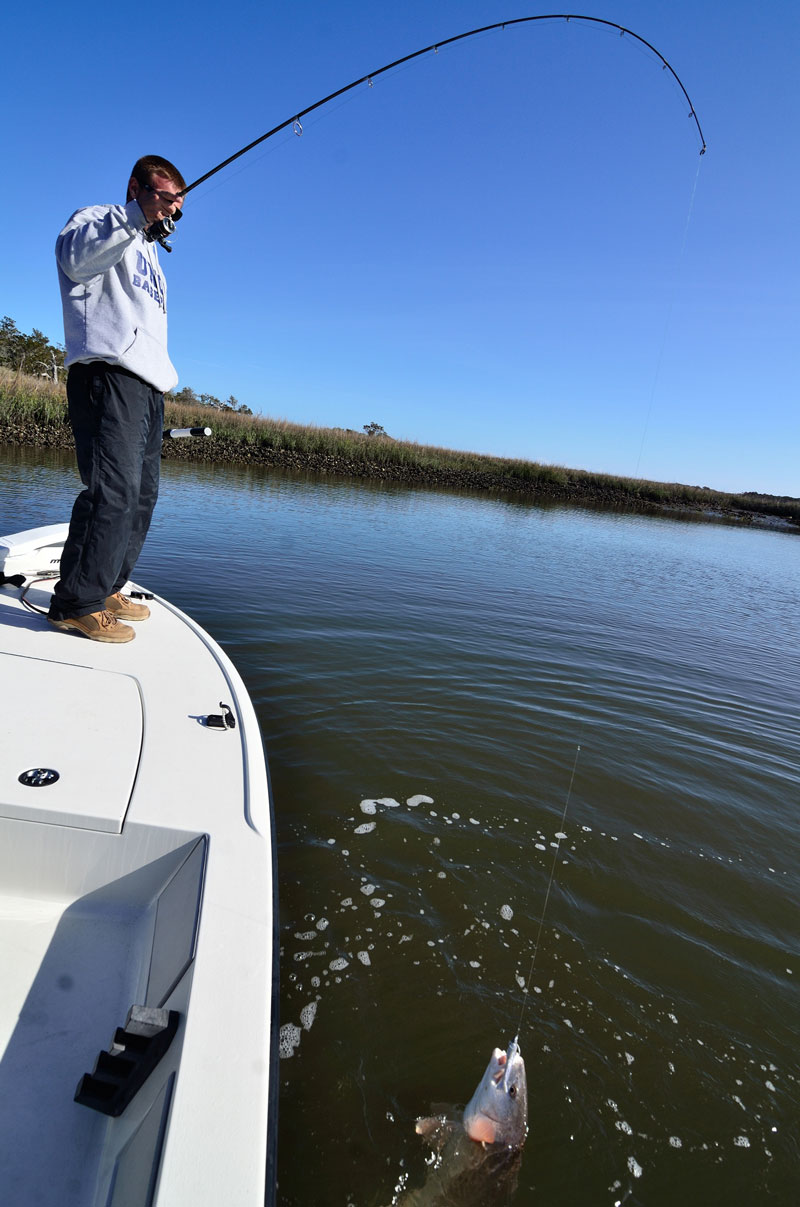
Experience in a core area gives anglers an edge on knowing where to go first in the spring. Both Dail and Wolfe prefer the lower stages of the tide between the last half of the fall and the first few hours of the rise.
“The fish are bunched up a little more. The bait and fish don’t have as many places to go that give us an advantage,” Wolfe said.
“Small crabs don’t leave the estuary in the winter like their older relatives. They dig into the mud instead, and they will dig out during the spring. There are lots of little crabs around. Redfish just love crabs and will eat these little guys on a regular basis.”
Wolfe uses a wide variety of baits and lures during the spring: live bait, dead bait and an assortment of artificial options. He said live mud minnows, peanut pogies, blue crabs and frozen shrimp are hard for a redfish to resist. He’ll fish these baits on a Carolina rig or a light jighead. When using artificial lures, Wolfe will choose scented soft plastics.
Dail will use live bait on occasion, but small artificial lures are his primary weapons; working them with less action and speed are another key to spring success.
“Fish will already be feeding on small baits, and bait will be moving a little slower than normal, too,” he said. “I choose pogie patterns with paddletails like Saltwater Assassin’s 3-inch Sea Shad rigged weedless on a 1/16- to ¼-ounce swimbait hook. Chicken on a chain, grey ghost and opening night are my favorite colors.”
Dail prefers swimbait hooks because he can fish them around structure more easily. Jigheads alone can be structure magnets, and this time of year when sea lettuce is releasing, the jig heads often collect plenty of it.
Spring’s deadly combo
With warm water pulling redfish out of their winter patterns and accelerating their activity levels, they’re looking all around for a meal, and anything they see or hear will turn some heads.
That’s what makes the popping cork a surefire way to get a redfish’s attention in spring.

Not only do popping corks suspend lures and baits over structure, the chugging and clacking sounds and vibrations reverberate throughout the surrounding waters. Reds aggressively looking for a meal will respond quickly.
Popping corks mimic fish feeding at or near the surface, and predators are drawn to the noise, then see a fish or shrimp barely moving, just below the commotion. That’s often too much for the redfish to ignore.
A popping cork rig consists of a cone-shaped cork rigged on a stiff wire with beads on either end, leading to a section of fluorocarbon leader and a lure or bait. Live shrimp or minnows, or an artificial lure such as a D.O.A. shrimp or soft-plastic shad-bodied option on a light jighead.
The leader needs to be short enough to keep the lure near the area of commotion, and a short leader also makes it easier to make long, accurate casts. Regardless of the depth, the leader should be about 24 inches long.
For anglers who want ready made rigs, D.O.A. sells its Deadly Combo rig: a popping cork pre-rigged with 24 inches of fluorocarbon leader and a 3-inch shrimp. It will stimulate all senses and produce a quick reaction bite right during the spring frolic.
Freshwater lures are good spring choices
Saltwater tackle and lures make up a big portion of the fishing industry, but they don’t match what is manufactured to catch largemouth bass, lures that regularly fly off store shelves.
While many bass lures are designed to mimic small shad, they are very similar to the size, shape, and color of small menhaden, aka peanut pogies — the primary spring diet of redfish. Anglers can use a wide selection of freshwater lures and get a big reaction.
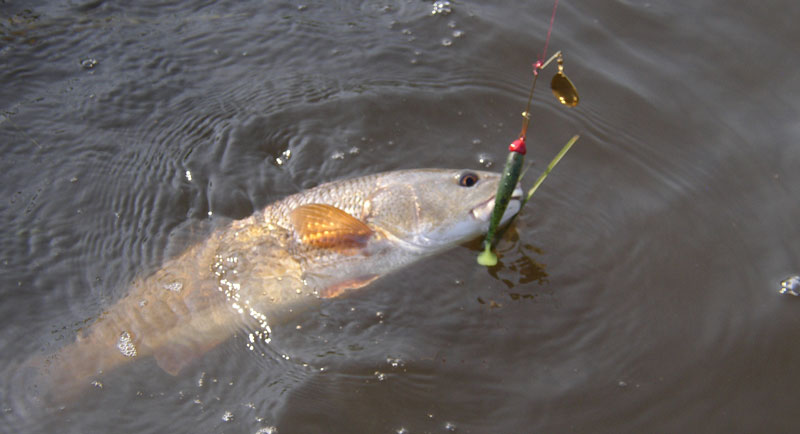
Face it, redfish are the largemouth bass of the saltwater lair; they’re even known as spot-tail bass in many South Carolina locales. But redfish can be a little sluggish coming out of the winter, especially if the water is still running a little cool. Jason Dail of Silver Spoon Charters out of Wilmington, N.C., prefers to use lures that mimic the size and action of the available spring forage.
“The smaller the lure, the better in the spring, and then I size up as the summer arrives,” Dail said. “I also fish slower in the spring, too, and then increase the speed over the summer.”
One of Dail’s favorite spring crossover lures is a spinnerbait. Not only does a spinnerbait produce a lot of flash and vibration, it can be retrieved very slowly.
“Betts’ Magnum Spinnerbait with No. 1 and No. 2 Colorado blades are very effective in spring,” he said.
In addition to spinnerbaits, many other bass lures that provide a perfect imitation for peanut pogies moving at a slow speed. Since anglers are fishing in shallow water around structure, shallow-running and suspending hard baits are perfect options for imitating small saltwater baitfish. Berkley’s 3-inch Juke and the its 2¾-inch Flicker Shad look almost exactly like a peanut pogie, and both can be fished slowly and just below the surface, over the top of oyster bars where the redfish hang out.

